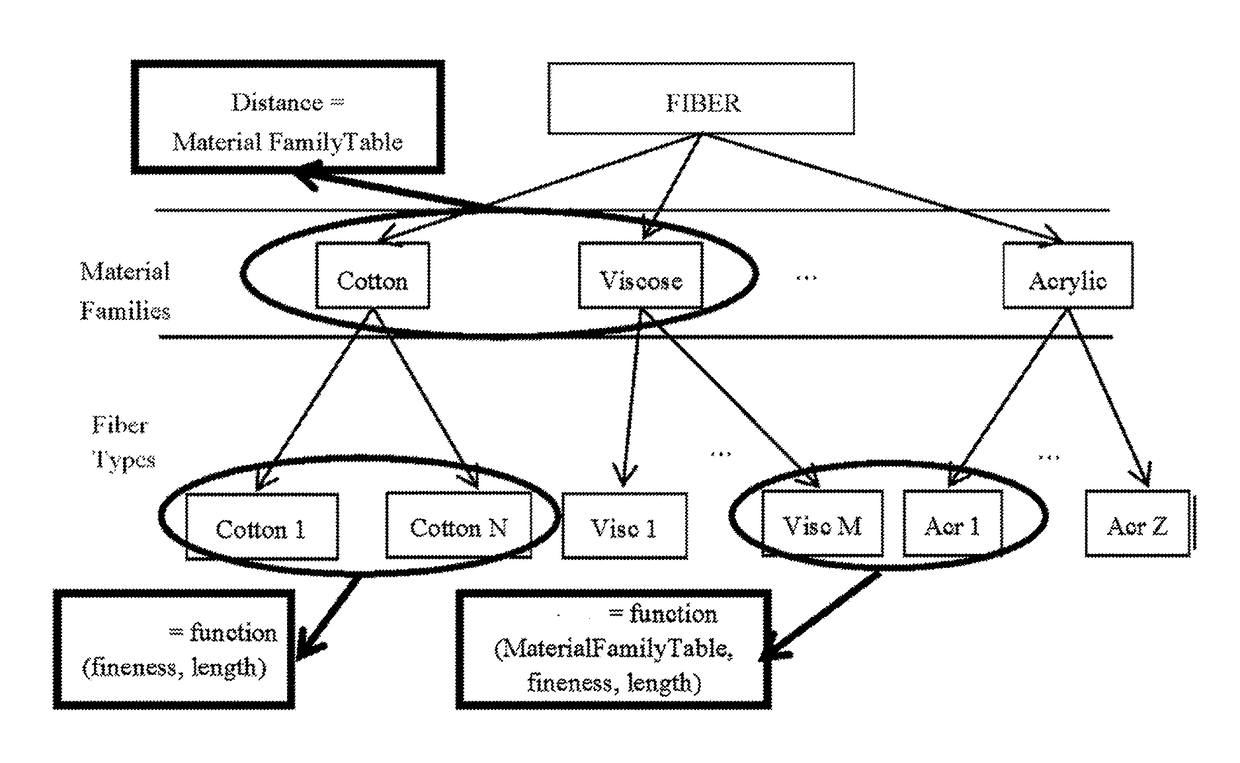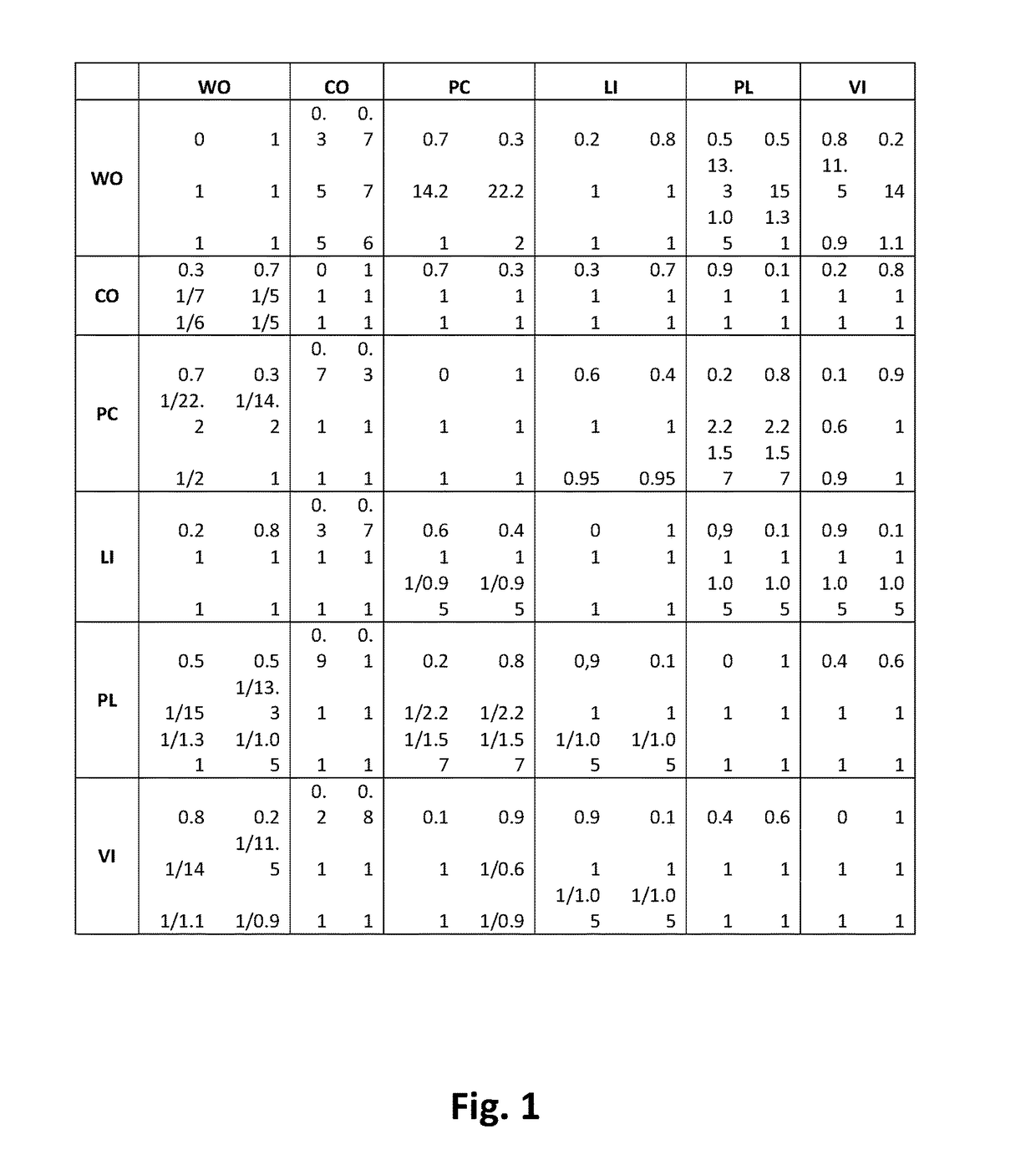Computer implemented method for dissimilarity computation between two yarns to be used for setting of a textile machine in a textile process, and computer program product
a computer program and yarn technology, applied in the field of textile industry, can solve the problems of complex textile products, difficult textile production of textiles for fashion and clothing, and complex textile products of textile manufacturing
- Summary
- Abstract
- Description
- Claims
- Application Information
AI Technical Summary
Benefits of technology
Problems solved by technology
Method used
Image
Examples
examples
[0064]The “distance” term will be used in this section as equivalent to “dissimilarity” and component of a yarn would mean here a material thereof.
[0065]1. Example of Distance Between Two Yarns
[0066]Note: Count and Sector are avoided for this example.
[0067]1.1 Yarns to Compare:
[0068]Yarn 1: [0.6 PC (1.5, 38), 0.3 PL (3.3, 60), 0.1 CO−t1 (1.4,20)]
[0069]Yarn 2: [0.5 CO−t1 (1.4,20), 0.25 LI (1.6, 40), 0.15 W (8.85, 50), 0.1 CO−t2(1.5,22)]
[0070]That means that yarn 1 contains 3 components:[0071]1. A component of type PC from the family of PC with a presence of 60% (0.6 of 1). The fibres of this component have a 1.5 of fineness and 38 of length.[0072]2. A component of type PL from the family of PL with a presence of 30% (0.3 of 1). The fibres of this component have a 3.3 of fineness and 60 of length.[0073]3. A component of type CO−t1 from the family of CO with a presence of 10% (0.1 of 1). The fibres of this component have a 1.4 of fineness and 20 of length.[0074]Yarn 2 is represented in...
PUM
 Login to View More
Login to View More Abstract
Description
Claims
Application Information
 Login to View More
Login to View More - R&D
- Intellectual Property
- Life Sciences
- Materials
- Tech Scout
- Unparalleled Data Quality
- Higher Quality Content
- 60% Fewer Hallucinations
Browse by: Latest US Patents, China's latest patents, Technical Efficacy Thesaurus, Application Domain, Technology Topic, Popular Technical Reports.
© 2025 PatSnap. All rights reserved.Legal|Privacy policy|Modern Slavery Act Transparency Statement|Sitemap|About US| Contact US: help@patsnap.com



